How To Dress For Skiing: The Essentials
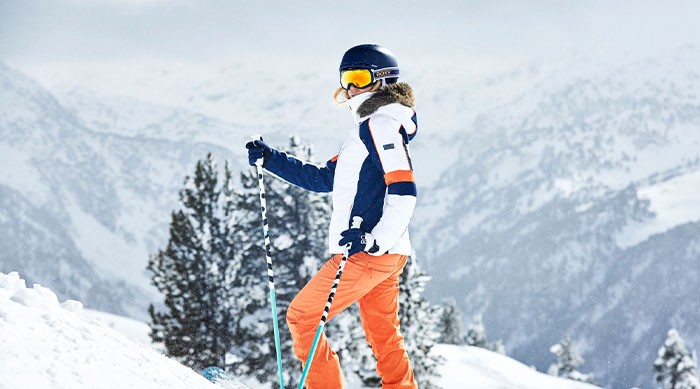
There are a few different ways to stay warm and dry when you're out on the slopes. Finding the right combination of style and functionality can take time, so we've put together an essential guide on what to wear skiing to make it easier for you!
Skiing Packing List: The Essentials
Other than your skis and ski boots, there are some essential pieces of snow equipment you need as the bare minimum.
- Base Layer: The first step to any snow outfit is a base layer. They help to wick sweat and keep you warm. They are also known as thermals or skivvies.
- Mid Layer: A mid layer is worn on top of the base layer and is designed to keep your core warm and help regulate your body temperature. A mid-layer can be added or removed depending on the temperature on the mountain.
- Outerwear: A waterproof, breathable jacket and pants are essential to staying warm and dry on the mountain.
- Ski Boots: The most important part of your ski gear is ski boots. Take time to choose the correct fitting pair of ski boots to have a great day on the hill.
- Gloves: Choose suitable gloves or mittens to keep your hands warm and dry all day long.
- Helmet: Keep your warm and increase your confidence with a ski helmet.
- Goggles: Ski goggles help you see better so you can ski better.
What To Wear Skiing: First Time or Advanced
If you're new to skiing and are not ready to invest in your own ski gear just yet, it is possible to rent most of the essential equipment like skis, boots, helmets and outerwear. For your first few trips, you can rent any essential ski gear from the resort or smaller rental stores in the area. Or borrow the essentials from family and friends.
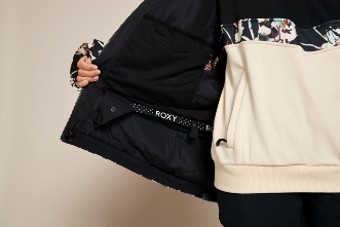
Choosing Ski Layers
Skiing is a physically intense activity in a cold winter environment where the weather can change from warm and sunny to windy and snowy in a matter of minutes. Wearing good ski layers like a warm base layer and suitable mid layers is essential for staying warm and dry all day on the mountain. A good rule of thumb is to wear 3 or 4 layers, depending on the weather and your chosen ski jacket.
- Your base layer should be stretchy, well fitted to your body and designed to wick moisture (sweat) away from your body and also keep you warm. When choosing a good base layer, look for technical synthetic fabrics like polyester or natural materials like merino wool, which are both warm, fast drying and breathable. Avoid wearing cotton as it soaks up moisture and will not keep you warm if it is wet.
- Mid Layers come in many styles and thicknesses, so it is best to find one that fits over your base layer and underneath your outerwear. The most popular ski mid-layer is a fleece, as it will retain heat to keep your body warm. Mid-layers can also be layered depending on the weather conditions, so if it's a colder day, you could wear an extra layer to keep you warmer.
- If you feel the cold, layering with a puffer jacket or vest can add even more warmth without adding bulk
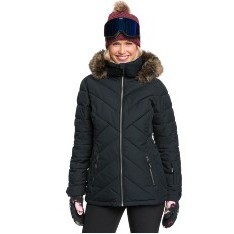
Choosing a Ski Jacket
Many ski jackets are available for different body shapes, personal styles and different on-snow activities. In short, there are two basic types of ski jackets and four essential design features for the snow to look out for:
- Insulated or Shell: An insulated jacket has built-in insulation that will keep you warm and cosy in the cold temperatures you’ll experience on the mountain. In comparison, a shell jacket is un-insulated, more similar to a heavy-duty raincoat, and focuses on being waterproof and breathable.
- Waterproofness and breathability: A ski jacket's outer fabric has a waterproof and breathable membrane built-in to stop water from getting in but allows moisture to escape. Most ski jackets (and pants) have a waterproof and breathability rating that reflects their performance. This rating is often found on the jacket's size label or the swing tag. A 5k/5k rating provides decent entry-level performance, while premium products will have a rating of 20k/20k or more. Other premium products may feature a Gore-Tex or DryFlight membrane for superior waterproofing and breathability.
- Essential Features: A snow or powder skirt is an elasticated strip of waterproof fabric that wraps around your waist, preventing snow from getting inside your jacket if you fall over or are riding in deeper snow. Cuff gaiters work similarly and are at the wrist hem of your jacket to stop snow from getting into your gloves. Under arm, vents help to quickly cool you down and get rid of moisture building up inside your jacket. Finally, an adjustable, helmet-compatible hood is an essential feature for any ski jacket as it helps seal out wind, rain and snow.
If you're still unsure how many layers to wear skiing, 3 or 4 layers is a good place to start. If you wear an insulated jacket, three layers (base layer, mid-layer and ski jacket) will keep you warm and comfortable. And, if you wear a shell ski jacket, four layers (base layer, mid-layer, puffer jacket or vest and shell jacket) is a good number of layers to wear without too much bulk
For a more in-depth look at ski jackets, see our how-to choose women's ski jackets Expert guide.
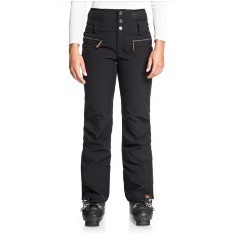
Choosing Ski Pants
Like jackets, ski pants come in insulated and shell versions and a broad range of styles, fits and technical specifications. When choosing a good pair of ski pants, key features to look out for are to ensure they have good venting and ankle gaiters that will prevent snow from getting into your boots. Ski pants should be able to fit over your thermal or base layer and be comfortable so that you can wear them all day.
See our guide on How to Choose Skiing Outerwear expert guide for a more in-depth look at ski jackets and pants.
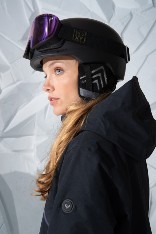
Choosing a Ski Helmet
Helmets are quickly becoming popular, must-have pieces of equipment for skiers. 80% of skiers wear a helmet on the snow, whether they are beginners or pros. Here is a brief checklist on how to find the correct fitting helmet.
- A helmet should feel firm and comfortable with no weird pressure points or pain.
- Bring your goggles along when fitting a helmet to ensure that the goggles and helmet fit together on your face.
- Many helmets come with a size adjuster and different types of ventilation so consider which features you would like to have in your helmet.
- Ensure that your helmet conforms to a recognised safety standard, such as the EN 1077.
Choosing Your Ski boots
If you've ever spent a day skiing in ill-fitting ski boots, you will know that boots are the most important equipment in your ski gear set-up. Ski boots are made of a hard outer shell for support with a soft liner for cushioning and warmth. The two key factors in choosing a pair of women's ski boots are fit and flex.
- Fit: Ski boots use the Mondo sizing system, based on the centimetre measurement of the inner sole. Width, also known as Last, varies from boot to boot, so it’s highly beneficial to try ski boots before buying them. When trying on boots, you’re looking for a snug, movement-free fit with no heel lift. Well-fitted ski boots should feel like a sock around your foot.
- Flex: Ski boot manufacturers rate boots on a flex index: a low number is soft, a high number is stiff. Soft flexing boots tend to be more comfortable and forgiving for beginners, while stiff boots are more responsive and suited to fast, expert skiers. Keep in mind that this flex rating varies between brands.
If you are still unsure of the fit of your ski boots, book in to see a professional boot fitter who will be able to assist you in finding the correct fitting boot and make any necessary adjustments you may require
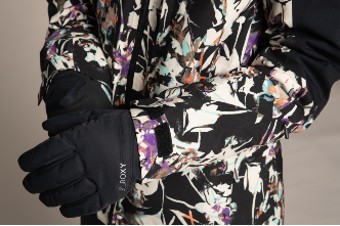
Choosing Ski Gloves
It is important to keep your hands and feet warm on the mountain because if they are warm, your body will be warm. A well-made pair of ski gloves or mittens will keep your hands warm and dry all day. Your ski gloves or mitts should be durable enough to withstand the wintery elements and be warm, waterproof and breathable.
- Gloves or Mitts? Mittens can be warmer than gloves, so if you're skiing on a cold day or in colder temps, get a pair of mitts. Gloves give you extra dexterity to adjust your goggles, zip-up jackets and do a shaka. Many gloves and mitts are also compatible with your smartphone, so you can take a selfie on the chairlift without taking them off.
- Under or Over Cuff? Under-cuff gloves are shorter and will fit underneath your sleeve cuff for a cleaner look. Whereas over-cuff gloves sit over your sleeve cuff and, while they look bulkier, can be more effective at keeping snow out on a powder day.
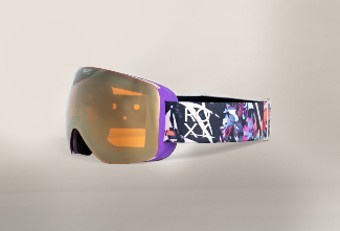
Choosing Ski Goggles
Eye protection on snow is essential to keeping wind, rain, snow and bright sunlight out of your eyes. Get yourself a set of comfortable, well-fitted goggles that fit in with your helmet (if you wear one). Goggles come in a range of sizes and lens variations, so when choosing your goggles look out for:
- Almost all goggles today will have a double-lens construction and a built-in anti-fog treatment to prevent foggy goggles. The bigger the goggle, the more surface area for heat and moisture to spread out to help prevent and slow down the start of a foggy goggle.
- High-quality goggle lenses have full UV protection, minimal distortion, and wide peripheral vision.
- Comfortable, even pressure across the face. If you have a gap around the goggles' seal, it can cause fogging. If you have a small nose, look for a universal fit goggle as they have more foam to fill in any gaps.
- If you want a versatile goggle, opt for a ski goggle with a spare lens so you can change the lens depending on the weather conditions. The darker the lens, the better it is for sunny and bright conditions, whereas a lighter, more transparent lens will work better in snowy and cloudy conditions
What Else Do You Need For Skiing?
Choosing your Ski Socks
Ski-specific socks are a must when it comes to warm, dry feet. Ski socks tend to be thinner than you expect and often feature a cushioned shin zone for extra comfort. If you are renting ski boots, a thicker sock can be more comfortable; however, if you have your own ski boots, a thinner sock will give you better responsiveness. When skiing, you should only wear one pair of socks at a time as two pairs of socks can make your feet sweat and make them colder. A good ski sock is generally made out of a fast-drying, moisture-wicking fabric blend like a polyester or merino wool blend that can be worn days in a row without getting smelly. Look for extra padding on the shins, and thinner material on your heels and instep, for an enhanced fit and breathability.
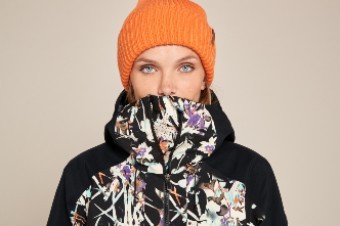
Choosing a Ski Hat
A warm and cosy hat is a must-have on the mountain – even if you wear a helmet while skiing. And while a wide variety of styles are available, you can’t go wrong with a knit beanie that will cover your ears and keep your head warm in the cold weather. If a beanie isn't your style, get a knitted headband or fluffy ear muffs to keep your ears toasty.
Choosing Neck Warmers & Face Masks
The perfect way to complete your ski look on the slopes or even around town is to wear a neckwarmer, facemask, hood or balaclava. All these protect your face and neck from the wind, snow and sun while keeping you warm. Often made from soft fabrics like merino and fleece, neck warmers and balaclavas are a great way to accessorise.
- Although a neckwarmer might be a basic accessory, it can be worn in multiple ways on the slopes, from around your neck to keep cold air out of your jacket to a trendy headband or hat for when you have helmet hair after a big day of skiing.
- A face mask extends the warmth of a neck warmer to include your lower face and nose.
- A balaclava’s all-over design provides full-face protection and, unlike some face masks, won’t slip down when you’re skiing.
- Snow hoods are loose fitting, ultra-comfortable and versatile and can be worn over a helmet or beanie.
Neck warmers, masks and hoods are a fun way to mix up your ski wardrobe, so why not get a few – from a lightweight lycra tube for sunny days to a fleece-lined hood for colder winter days.
Related Guides
How To Dress for Snowboarding: The Essentials




















